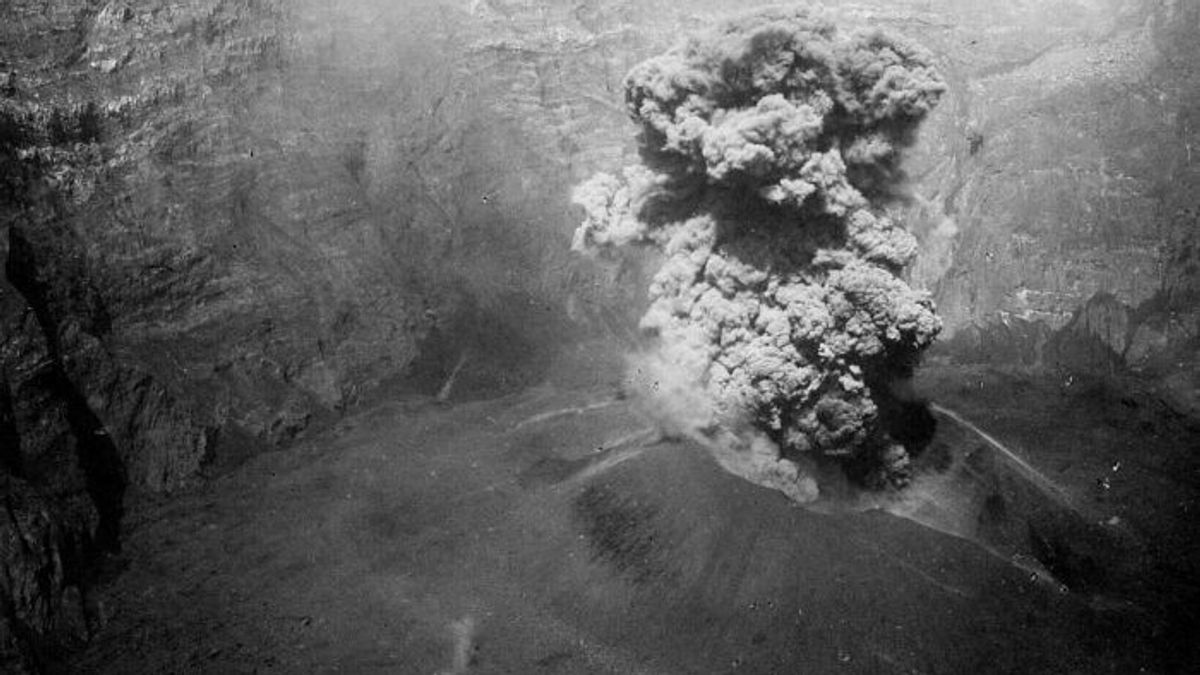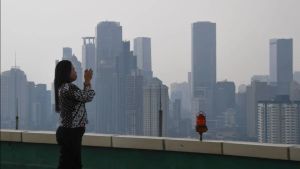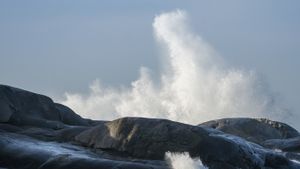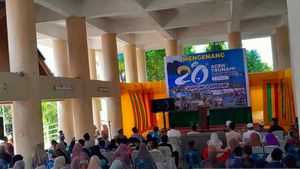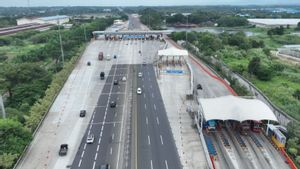JAKARTA - Mount Raung is one of the charms of East Java. In addition, mountains as high as 3,260 MPDL have been considered sacred since the Majapahit era. A series of kings from the Blambangan Kingdom (Banyuwangi) made Mount Raung a place to meditate.
The famous Blambangan Maharaja, Tawang Alun, is one of them. And it turns out, Mount Raung has erupted many times. One of them was the eruption in 1586 which claimed many lives.
In its history, Raung has become the most sacred and sacred mountain by the Banyuwangi people, at least to this day. Raung is even the most sacred when compared to Ijen, Merapi, and Meranti. As proof, Mount Raung has been used as a center of worship by the rulers of the Blambangan Kingdom since time immemorial.
"Meanwhile, Mount Raung is a mountain that is considered to have mystical powers until now, and it is not uncommon to find hermits on Mount Raung. This is closely related to the opinion of the ancient people that the mountain is pingkalalingganing buwana (the lingganya of the world). Thus, the mountains in Jember (especially the Hyang mountains) make it possible that this place used to have a close relationship with the religious system during the Majapahit era, "wrote Yebqi Farhan in the book Past of Jember: Historical Study of Jember Civilization in the Majapahit Period (2017).

Sejawan Sri Margana also mentioned the indication of Mount Raung as a site of worship because there are many relics of Hindu places of worship. For this reason, the place of worship is believed to have existed since the 17th century to the 18th century. Of which there are many relics in Songgon and Sempu Districts, Banyuwangi.
Some of them can still be seen today. Petilasan in Jamberwangi Village, for example. In line with that, many kinds of Blambangan royal heritage are found around the foot of Mount Raung. The remains are believed to have been buried in volcanic ash due to the eruption of Raung in the 18th century.
"The royal relics are thought to have been buried by the Raung volcanic ash from the two eruptions. In 2010 we discovered the foundations of royal buildings, pottery, spears, ceramics, change, and so on, buried 1.5 meters deep in the village of Macan Putih. Until now, there are still many that have not been excavated, ”said Sri Margana in the book Ujung Timur Java: The Struggle for Hegemony in Blambangan 1763-1813 (2012).
Eruption after eruptionIn people's memories, Mount Raung is not only famous for its beauty and sacredness. Because, the eruptions that were written in the history of volcanic eruptions in Indonesia are well known. Launching Detik.com, from data from the Raung Volcano Monitoring Post in Sumberarum Village, Songgon District, Mount Raung first erupted in 1586. The first eruption was recorded as a great eruption. As a result, many areas around the foot of the mountain were damaged, and casualties fell.
"The eruption of Mount Raung has been recorded since 1586. The character of the eruption of Mount Raung is explosive with the main potential hazards in the form of hot cloud glides and ejection of pyroclastic material," said Sukir Maryanto in the book Seismic Volcanology (2016).

Eleven years later, or in 1597 the mountain with another name Mount Rawon erupted again. The second eruption was as great as the first. The great eruption again claimed many lives. The same eruption also occurred in 1638. The eruption resulted in a flood of cold lava. However, the area affected by the eruption was wider, compared to the first or second eruptions. Likewise with the victims of his life.
"Until now, Mount Raung and Ijen Crater are still active. Although not dangerous. The Caldera which was once a "hellfire" which was all-powerful as a result of the eruption is now a fertile plantation. This fertility is the legacy of volcanic elements which contain many minerals that are needed by plants, ”wrote a report from the Weekly Djaja Magazine (1969).
The Raung eruption returned between 1800 and 1808. However, it did not cause any casualties. Three years later, or precisely from 1812 to 1814, another eruption occurred. Heavy ash rains and rumbling sounds made residents around Mount Raung flee.
After 44 years, Mount Raung is relatively calm. However, volcanic activity again increased in 1859, 1864, 1881, 1885, 1890, 1896. Eruptions also occurred when entering the era of the 1900s. Namely in 1915, 1916, and 1917. Followed by lava flows in the caledra in 1921 and 1924.
"The character of the eruption of Mount Raung is explosive, such as what happened in 1586, 1597, 1638, 1890, 1953 and 1956, resulting in ash that was thrown into the air and hot clouds that rolled over part of the body of the volcano in 1953 were the main danger. Mount Raung or primary danger is a direct consequence of an eruption such as hot cloud glides and pyroclastic throws, "present on the ESDM website.
The mountain, which has a caldera lip covering an area of 1,200 square meters, is back to show off. On February 13-19 1956 another eruption occurred. The following years saw only an increase in activity. However, in 1986, 2012 the smog erupted again. As a result, the villagers around the foot of Mount Raung have been familiar with eruption after eruption, to this day.
The English, Chinese, Japanese, Arabic, and French versions are automatically generated by the AI. So there may still be inaccuracies in translating, please always see Indonesian as our main language. (system supported by DigitalSiber.id)
